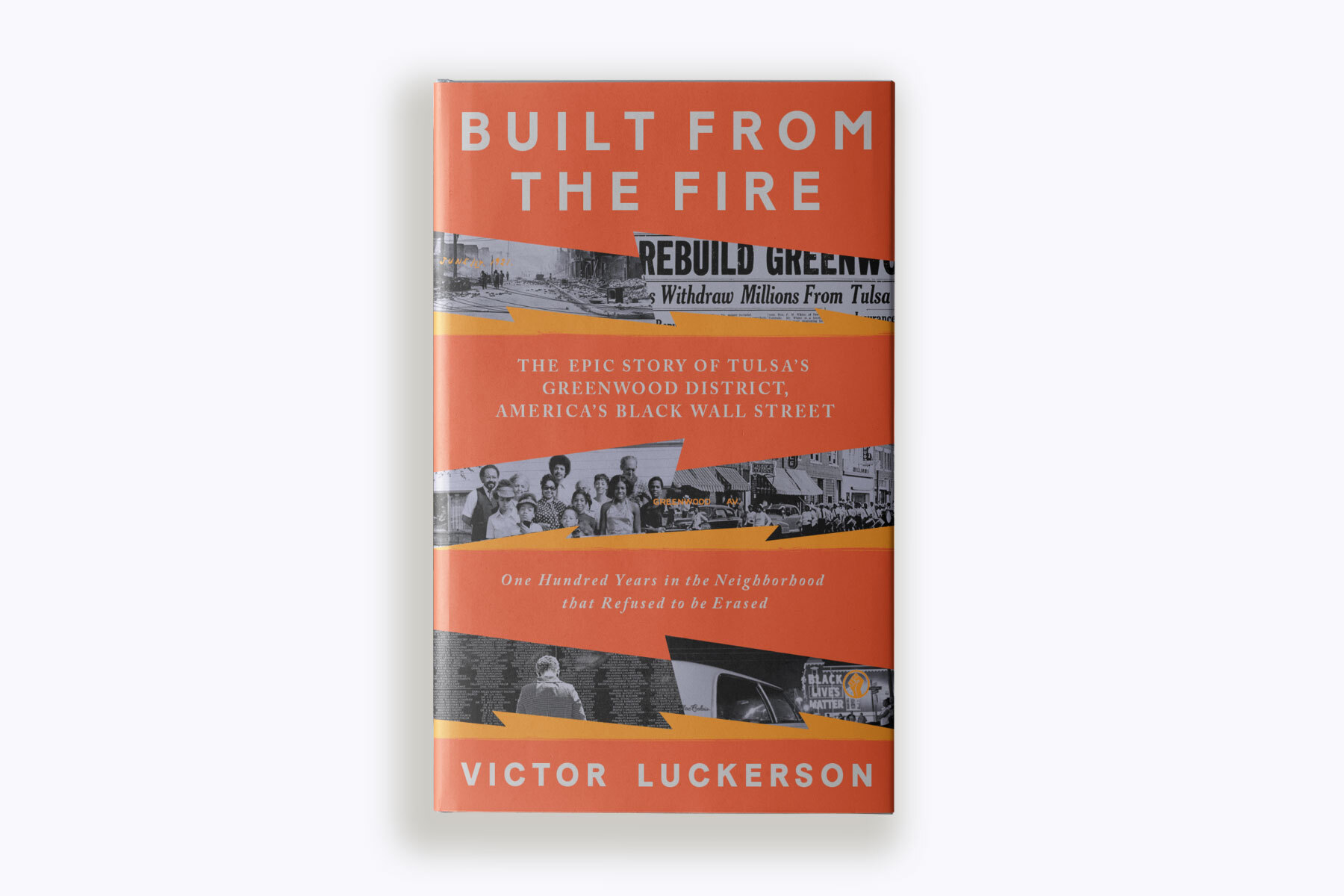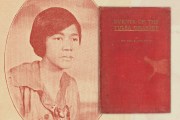In 1921, the Greenwood district of Tulsa, Oklahoma, and its roughly 10,000 residents faced one of the most devastating acts of domestic terrorism and racialized violence in our country’s history. From May 31 to June 1, a White mob, spurred by false allegations that a 19-year-old Black man had assaulted a 17-year-old White girl, brutally massacred hundreds of residents and burned the 35 square blocks that made up the community.
At the time, the thriving district, dubbed “Black Wall Street” by Booker T. Washington, was one of the most affluent all-Black communities in the country. Greenwood was considered exceptional for its safety for Black Americans in an era when rampant lynchings and racial violence that had been normalized in the country, and it was known for economic accomplishments like being the home of 121 Black-owned businesses and the largest Black-owned hotel in the United States.
An estimated 10,000 Black Tulsans, war veterans and sharecroppers alike, many of whom had come to “Dreamland” to work and escape the clutches of racial violence, suddenly found themselves without any trace of a home or community. They lost millions of dollars in property and land that neither the city nor insurance companies ever repaid.
The community was left with, at best, an estimate of the number of lives lost because the horrors were, for the most part, erased from history and memory of future generations.
In 2019, journalist and author Victor Luckerson moved from Montgomery, Alabama, to Tulsa to tell the stories of the survivors who rebuilt Greenwood and the challenges their descendants still face today.
-
Read Next:
“My entry point to this story was not actually the massacre itself, but the ingenuity, solidarity and entrepreneurship of the people who’ve called the place home for generations,” Luckerson said. “I wanted to explore their legacies in full — the massacre is part of that, but it is not all-defining. Greenwood deserves to be a permanent fixture in the nation’s understanding of our collective history, not just a trending topic.”
The 19th spoke with Luckerson about his newly released book, “Built from the Fire: The Epic Story of Tulsa’s Greenwood District, America’s Black Wall Street,” the importance of media in documenting history and what Greenwood means today.
This interview has been edited for length and clarity.
Katherine C. Gilyard: What about the story of the Greenwood community and the massacre drew you in?
Victor Luckerson: I knew about [the massacre] but I was much more interested in this “Black Wall Street” — this mythological symbol of Black success buried in our history. The reason I started researching Greenwood was because a young friend my age told me [he] was tired of only seeing stories of Black trauma in historical depictions (i.e. slavery or civil rights movement racial violence), and he had never heard of Greenwood. So my initial goal was to really recenter our people in the American story in that period between the Civil War and the civil rights movement.
What notions of Tulsa or goals for the book changed as you started to report and research?
The idea that Greenwood was a utopia before 1921 and regained that classification afterward. It was a real community — there was crime, poverty, areas with poor utilities and more. There was also an amazing nightlife, impressive one-person businesses, and, of course, the major enterprises like the Dreamland [Theatre] and Stradford Hotel that people know about. Really presenting a holistic picture of the neighborhood honestly wasn’t something I necessarily considered a priority when I began, but talking to people who really remembered Greenwood in its heyday, some of whom grew up poor but still treasured the space, hammered home how important it was.

I was in awe at the degree of legal and state-sanctioned actions that were permitted. What don’t people understand enough regarding officials’ role in the massacre?
I think the “mob” has taken on a little too much mystique. Since we can’t name very many of the people who we know for a fact participated in the physical destruction of Greenwood (though I name a few in my book), it allows the perpetrators to remain amorphous, floating just outside of history. But we do know that Tulsa’s police commissioner deputized members of the mob and handed them badges. We know the mayor of Tulsa at the time endorsed the plan to seize Greenwood land and convert it into an industrial site. So I think analyzing the institutions that sought to destroy and exploit Greenwood is more important than hoping that a member of the mob’s granddaughter will one day spill the beans about what “really happened.”
So much of the massacre and the story of Greenwood dances on the dynamics of power, race and gender. How important are they to contextualize what happened?
There was so much paranoia in White Tulsa about the specter of White women and Black men sleeping together. There were literally city hearings about bars where young White and Black people were seen dancing and listening to ragtime music. People may know that the Tulsa race massacre was sparked in a sense by a false allegation of rape by a White woman, but the seeds for that sort of claim to become a death sentence were planted much earlier.
You’ve written about the women of Tulsa, including Mary Jones Parrish, Loula Wiliams, Eddie Faye Gates, Cleora Butler, etc. What has your work of honoring and keeping their names alive entailed?
Between the most prominent early entrepreneurs and the details of the massacre itself, Greenwood often reads as a very male story in historical accounts. But women played a really vital role in the community’s success. You have to really dig to suss that out of the historical record sometimes, though.
For example, Loula Williams, the owner of the Dreamland Theatre, is one of the central figures in the first half of the book. But all the early articles about the Dreamland credited the theater’s construction to her husband John. I had to dig into property records to find an affidavit where Loula asserted sole ownership of the property, while her husband independently owned an auto garage. We don’t know the exact reason why they entered into this arrangement — maybe they thought splitting their assets was a savvy business move, or wanted to mitigate legal risk in the event one of them was hurt [or] killed — but the fact that it’s Loula making these maneuvers gives her an agency that I think she lacked in previous works. She may be most famous for sitting in the passenger seat in that famous photo of the Greenwood family in a 1910s car, but really, Loula was driving the family businesses.

Can you speak to the unique role and importance of Black media related to the massacre, both at the time and today?
The Black press played a key role in providing a true account of what unfolded in Tulsa during the massacre and afterward. While the White press was helping to gin up support for a scheme to seize Black-owned land, it was Oklahoma City’s Black Dispatch that reported on Black leaders quickly mobilizing to form mutual aid groups and refusing to sell. The only way to get a true picture of what was going on was through the Black press.
In later generations, the Oklahoma Eagle kept the story of the massacre alive in its pages even when the White press rarely mentioned the event. And in modern times, both the Eagle and the Black Wall Street Times have published special commemorative editions marking massacre anniversaries. So yes the Black press plays an essential role.
-
More like this
- Kimberlé Crenshaw’s work was cut from AP African American Studies. Now she’s fighting back.
- Mainstream education often neglects Black history. TikTok, Freedom Schools and other resources are bridging the gap.
- We asked lovers of Black literature to curate a Black resistance reading list. Here’s what they chose.
With the reach of mainstream media in mind, as well as its racist and anti-Black practices, do you think the media has a role in liberation? What is it? What’s at stake if journalism continues to endorse these practices?
The truth will set you free, right? If you believe that, then yes, the pursuit of truth through journalism can be a liberatory force. I think many journalists feel that is their pursuit on some level. The challenge, of course, is that truth gets warped when it passes through the filter of human perspective and bias. In Oklahoma in the early 20th century, White newspapers openly praised lynching. It was only in the Black press that so-called “mob law” was actively condemned, as well as in works like Mary Jones Parrish’s “Events of the Tulsa Disaster.” Parrish had a prophetic line in her book: “Just as this horde of evil men swept down on the Colored section of Tulsa, so will they, some future day, sweep down on the homes and business places of their own race.” I thought about that during the Capitol riots on Jan. 6.
Ultimately racism usually leads to subverting basic democratic principles and human rights — of course that is a danger to everyone who wants to live in a free, liberatory society. It’s on the media to directly call out these challenges to all of our freedom when they occur.
Your book describes Greenwood before and during the massacre and as it is today, including the challenges residents continue to face. Why was it important to focus on both?
I think it’s a fairly common misconception that Greenwood never rebuilt after the massacre. In fact, the neighborhood got even bigger in the ensuing decades and wasn’t permanently dismantled until urban renewal and highway construction. So I think it’s important to be accurate about what happened and how the discrimination the community faced wasn’t just limited to the massacre. Greenwood was redlined, Greenwood residents were denied wartime jobs during World War II, and of course they were barred from many accommodations due to Jim Crow. They battled each of these challenges head-on, just as they responded to the impact of the massacre, and that’s worthy of acknowledgment and study.
If people could read only one chapter of your book, which would you recommend?
I think Chapter 8 — A Conspiracy in Plain Sight — is probably the most important chapter in the book. It opens with the scene of a decimated Greenwood on June 2, the day after the massacre, and plays back the tape on how the community rebuilt even as White Tulsa tried to undermine that rebuild at every step. The issues today concerning reparations for Greenwood trace back to the decisions that were made to deny justice during those chaotic summer months. I look forward to seeing how other researchers can advance some of the insights I found analyzing lawsuits of massacre victims and other documents of that time.
What are you hoping people walk away from this work with?
I’d like people to have a clear sense of Greenwood as a real community rather than either a) a utopia or b) a kind of martyr and receptacle for White guilt. I need people to accept this place and its people on their own terms. All of the successful activism in Greenwood ultimately stemmed from a sense of love and care for one’s own community and a sense of solidarity. So seeing those really human elements, rather than placing the neighborhood on an untouchable perch as a symbol of the best or worst of our nation, is what I’d like to see.
Describe the soul of Greenwood.
Greenwood is defiant. The subtitle for my book is “the neighborhood that refused to be erased.” That says it all.







